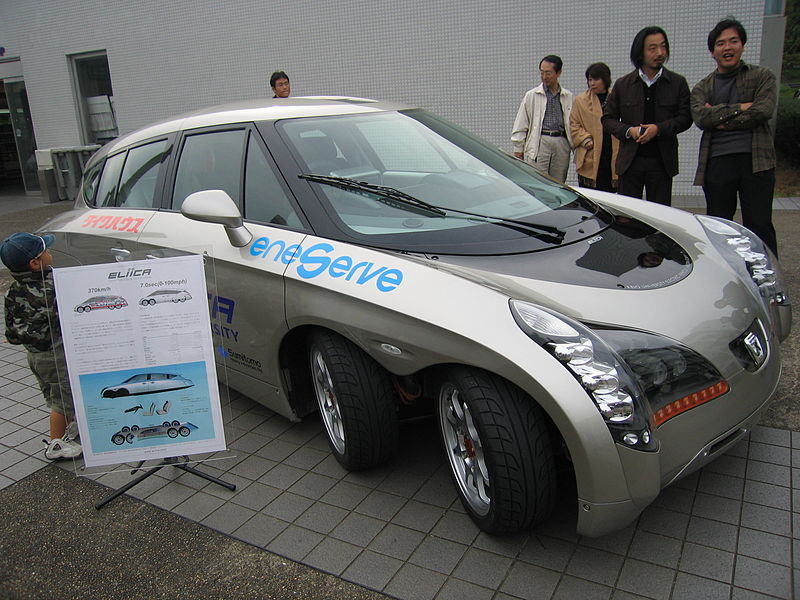
Fukuoka, Japan, Dec 27, 2007 - (JCN Newswire) - Panasonic Communications Co., Ltd. today announced that the company has started shipping samples of the world's thinnest* (9.5 mm height) internal Blu-ray Disc (BD) drives to personal computer manufacturers.
Since Panasonic introduced the industry's first 12.7 mm high internal DVD Super Multi Drive in 2003, it has continued to pioneer optical disc drive technology by making the drive's profile even thinner, to 9.5 mm and then to 7.0 mm. The company has achieved these breakthroughs by producing key devices in-house and is leading the industry in providing the benefits of Blu-ray discs.
Now available to PC manufacturers, the new sample 9.5 mm high BD drives, were accomplished by combining Panasonic's own technologies such as the low-profile, 2-lens actuator and spherical aberration compensation mechanism and an optimized optical design for CD, DVD and Blu-ray disc laser.
Due to the increasing need for data volume on personal computers and the gaining popularity of high definition digital images, the demand for Blu-ray discs and BD drives is rapidly rising. Panasonic believes the world's thinnest BD drive ideally meets these consumer trends as it also provides a high added value for notebook PCs that are also becoming thinner and lighter. Panasonic continues to bring out innovative disc drives through steady improvements in their performance and features.
Even with its 9.5 mm high thin profile, the new BD drive features double speed reading and writing for both write-once BD-R and rewritable BD-RE discs. This feature was facilitated through perfecting technologies such as improved light usage efficiency, high-speed recording waveform and broader bandwidth of the light-receiving element.
The product is also capable of reading and writing on BD-R DL (dual layer/50GB) and BD-RE DL discs and will be compatible with future organic pigment-type BDs.
The new drive is also compatible with three types of optical discs (BD, DVD, CD). It supports reading and writing on four types of BD media (BD-R, BD-RE, BD-R DL, BD-RE DL) and reading of BD-ROMs. In addition, it is capable of reading and writing on seven types of CD/DVD media (DVD-RAM, DVD-R, +R, DVD-RW, +RW, CD-R, CD-RW) and reading of DVD-ROMs and CD-ROMs. Thus, the new drive provides a DVD Super Multi Drive function plus Blu-ray Disc support. Further, it is capable of 8x writing on DVD-R/+Rs, making the handling of DVDs fast and easy.
The samples will be exhibited at the 2008 International CES, the world's largest consumer electronics show, to be held from January 7, 2008 at the Las Vegas Convention Center in the United States.
* As a sample of internal Blu-ray Disc drive for PCs. The dimensions are 9.5 mm (H) x 128 mm (W) x 127 mm (D).Fukuoka, Japan, Dec 27, 2007 - (JCN Newswire) - Panasonic Communications Co., Ltd. today announced that the company has started shipping samples of the world's thinnest* (9.5 mm height) internal Blu-ray Disc (BD) drives to personal computer manufacturers.
Since Panasonic introduced the industry's first 12.7 mm high internal DVD Super Multi Drive in 2003, it has continued to pioneer optical disc drive technology by making the drive's profile even thinner, to 9.5 mm and then to 7.0 mm. The company has achieved these breakthroughs by producing key devices in-house and is leading the industry in providing the benefits of Blu-ray discs.
Now available to PC manufacturers, the new sample 9.5 mm high BD drives, were accomplished by combining Panasonic's own technologies such as the low-profile, 2-lens actuator and spherical aberration compensation mechanism and an optimized optical design for CD, DVD and Blu-ray disc laser.
Due to the increasing need for data volume on personal computers and the gaining popularity of high definition digital images, the demand for Blu-ray discs and BD drives is rapidly rising. Panasonic believes the world's thinnest BD drive ideally meets these consumer trends as it also provides a high added value for notebook PCs that are also becoming thinner and lighter. Panasonic continues to bring out innovative disc drives through steady improvements in their performance and features.
Even with its 9.5 mm high thin profile, the new BD drive features double speed reading and writing for both write-once BD-R and rewritable BD-RE discs. This feature was facilitated through perfecting technologies such as improved light usage efficiency, high-speed recording waveform and broader bandwidth of the light-receiving element.
The product is also capable of reading and writing on BD-R DL (dual layer/50GB) and BD-RE DL discs and will be compatible with future organic pigment-type BDs.
The new drive is also compatible with three types of optical discs (BD, DVD, CD). It supports reading and writing on four types of BD media (BD-R, BD-RE, BD-R DL, BD-RE DL) and reading of BD-ROMs. In addition, it is capable of reading and writing on seven types of CD/DVD media (DVD-RAM, DVD-R, +R, DVD-RW, +RW, CD-R, CD-RW) and reading of DVD-ROMs and CD-ROMs. Thus, the new drive provides a DVD Super Multi Drive function plus Blu-ray Disc support. Further, it is capable of 8x writing on DVD-R/+Rs, making the handling of DVDs fast and easy.
The samples will be exhibited at the 2008 International CES, the world's largest consumer electronics show, to be held from January 7, 2008 at the Las Vegas Convention Center in the United States.
* As a sample of internal Blu-ray Disc drive for PCs. The dimensions are 9.5 mm (H) x 128 mm (W) x 127 mm (D).
JCNNetwork.

"Mangekyo means “kaleidoscope” in Japanese, and this projector can be used to paint your walls in bright, moving colors and shapes. The projector itself is a stylish tube that will look pretty cool sitting next to your white Homestar Pro when it comes out." -Trends in Japan




































